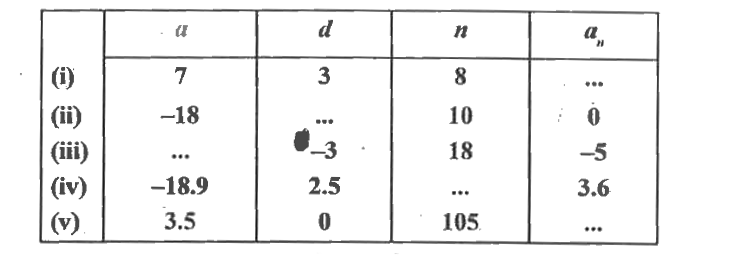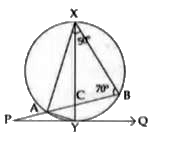Which of the following are APs ? If they form an AP, find the common difference d and write three more terms.
2,4,8,16,…Solution in Kannada
The correct Answer is:i] It is not an A.P.
ii] It is an A.P.
iii] It is an A.P.
iv] It is an A.P.
v] It is an A.P.
vi] It is not an A.P.
vii] It is an A.P.
viii] It is an A.P.
ix] It is not an A.P.
x] It is an A.P.
xi] It is not an A.P.
xii] It is an A.P.
xiii] it is not an A.P.
xv] It is an A.P.
Step by step video, text & image solution for Which of the following are APs ? If they form an AP, find the common difference d and write three more terms. 2,4,8,16,… by Maths experts to help you in doubts & scoring excellent marks in Class 10 exams.
Updated on:21/07/2023Topper's Solved these Questions
- ARITHMETIC PROGRESSIONSBOOK - ZEN PUBLICATIONCHAPTER - ARITHMETIC PROGRESSIONSEXERCISE - TEXTUAL EXERCISE (Exercise 1.2)
20 Videos
- ARITHMETIC PROGRESSIONSBOOK - ZEN PUBLICATIONCHAPTER - ARITHMETIC PROGRESSIONSEXERCISE - TEXTUAL EXERCISE (Exercise 1.3)
20 Videos
- ARITHMETIC PROGRESSIONSBOOK - ZEN PUBLICATIONCHAPTER - ARITHMETIC PROGRESSIONSEXERCISE - ARITHMETIC SERIES (ILLUSTRATIVE EXAMPLES)
6 Videos
- AREA RELATED TO CIRCLES BOOK - ZEN PUBLICATIONCHAPTER - AREA RELATED TO CIRCLES EXERCISE - ADDITIONAL QUESTIONS (HIGHER ORDER THINKING SKILLS)
7 Videos
- CIRCLESBOOK - ZEN PUBLICATIONCHAPTER - CIRCLESEXERCISE - ZEN ADDITIONAL QUESTIONS ( HOT [HIGHER ORDER THINKING SKILLS] - QUESTIONS) (IIT AND IMO)
9 Videos
Similar Questions
Fill in the blanks in the following table, given that a is the first term, d the common difference and an nth term of the AP :

View SolutionFind the sum of the following Aps:
(i) 2, 7, 12, …….., to 10 terms.
(ii) −37,−33,−29, …….., to 12 terms.
(iii) 0.6, 1.7, 2.8,….., to 100 terms
(iv) 115,112,110,……,to 11 terms
View SolutionFind the sum of all two digit natural numbers which when divided by 3 yield 1 as remainder.
View SolutionFind the area of the shaded region portion in the given figure if E is the midpoint of AB,AGE and BEF are quadrants, and DOC is a semicircle.

View SolutionIn the adjoining figure, XY is a diameter of the circle and PQ is a tangent to the circle at Y. Given that ⌊AXB=50∘ and ⌊ABX=70∘, calculate ⌊BAY and ⌊APY.

View SolutionWhich of the following are APs? If they form an AP. Find the common difference d and write three more terms. 2, 4, 8, 16,.......
View SolutionWhich of the following are Aps? If they form an AP, find the common difference d and write three more terms.
(i) 2,4,8,16,……
View SolutionWhich of the following are Aps? If they form an AP, find the common difference d and write three more terms.
(ix) 1,3,9,27,……..
View SolutionWhich of the following are APs ? If they form an AP, find the common difference d and write three more terms.
2,4,8,16,…
View SolutionWhich of the following are APs ? IF they form an AP, find the common difference d and write three more terms.
−10,−6,−2,2,…
View SolutionWhich of the following are APs ? IF they form an AP, find the common difference d and write three more terms.
1,3,9,27,…
View SolutionWhich of the following are APs ? IF they form an AP, find the common difference d and write three more terms.
a, 2a, 3a, 4a,…..
View SolutionWhich of the following are APs ? IF they form an AP, find the common difference d and write three more terms.
a,a2,a3,a4,…
View SolutionWhich of the following are AP? If they form an AP find the common difference d and write three more terms.
2,4,8,16,.......
View SolutionWhich of the following are Aps? If they form an AP find the common difference d and write three more terms.
10,−6,−2,2,....
View SolutionWhich of the following are Aps? If they form an AP find the common difference d and write three more terms.
1,3,9,27
View Solution
